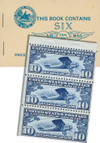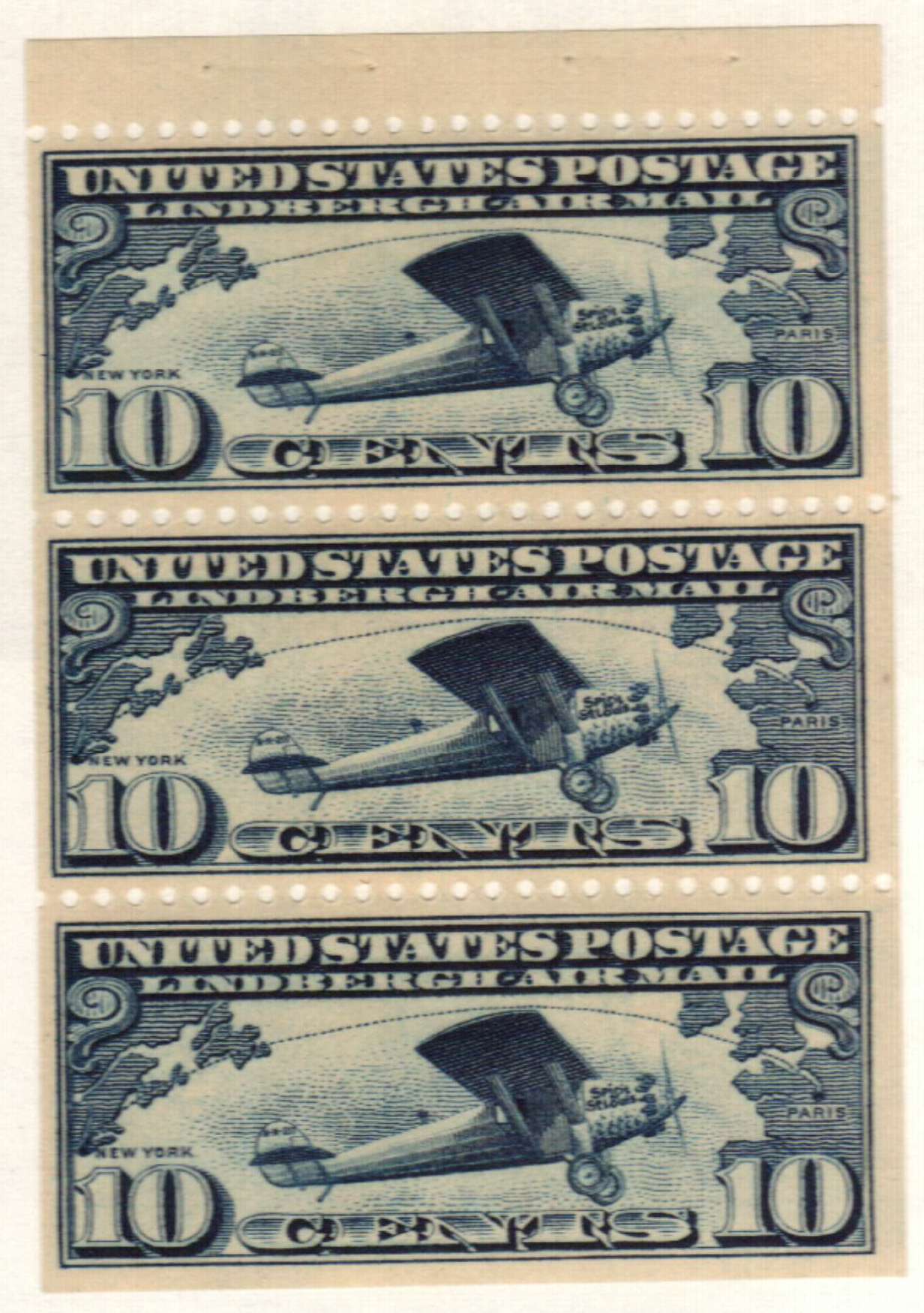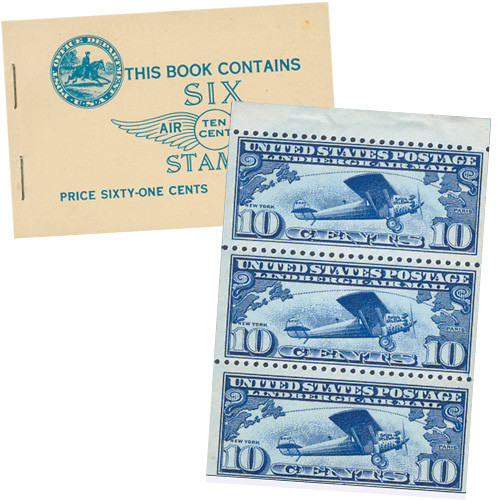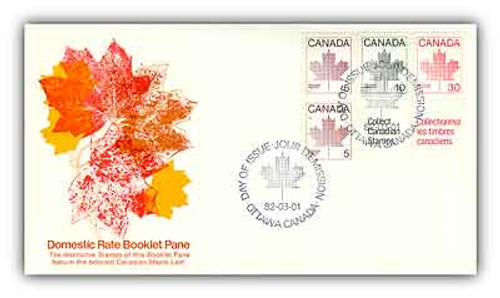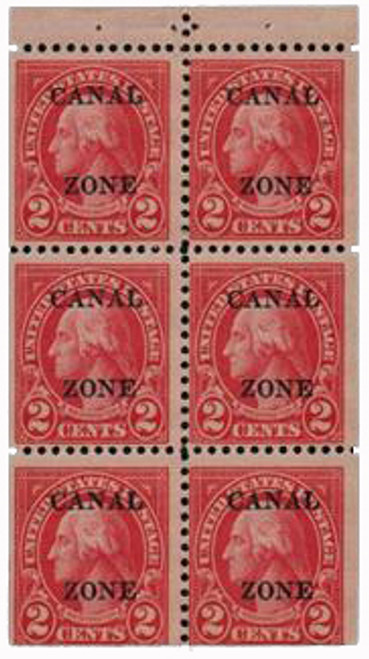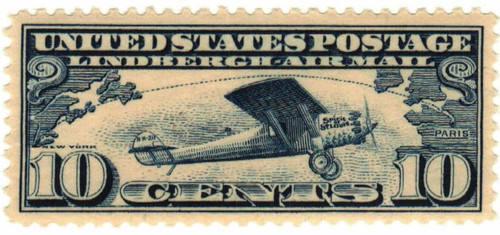
# C10a - 1927 10c Lindbergh "Spirit of St. Louis" - booklet pane of 3
1927 10¢ Spirit of St. Louis
Booklet Pane of 3
City: Washington, DC
Quantity: 873,360 stamps
Printed By: Bureau of Engraving and Printing
Printing Method: Flat plate printing
Perforations: 11
Color: Dark blue
First U.S. Airmail Booklet
Charles A. Lindbergh made history on May 20, 1927, when he embarked on the first solo non-stop flight across the Atlantic. Completed in 33½ hours, the flight earned Lindbergh a number of honors, including a Legion of Honor from France and a Congressional Medal of Honor and a Distinguished Flying Cross from the United States. He also became an instant celebrity.
Lindbergh’s rise to fame was so great that thousands of Americans wrote to Washington with requests for a commemorative stamp honoring his historic flight. While the post office wouldn’t picture him, they did agree to honor him, creating the first US stamp that honored a living person.

That stamp, US #C10 was issued on June 18, 1927, less than a month after Lindberg’s famed flight. More than 20 million stamps were issued and it was very popular with the public.
According to the third assistant postmaster’s announcement, there was an “enormous demand for airmail stamps in book form.” So a year later, on May 26, 1928, the Post Office Department issued the same design in a booklet – the first US airmail booklet. Only 145,560 booklets of six 10¢ Spirit of St. Louis airmail stamps were distributed to post offices nationwide. The booklet carried an extra charge of 1¢ for its cover, which made the total cost of a booklet 61¢.

Unaware that the booklet pane differed from #C10, many stamp collectors overlooked the new format. Two months after #C10a was issued, postal rates decreased and the 1927 10¢ airmail stamp became obsolete.
It would be 15 years before the post office would issue another airmail booklet – #C25a picturing a twin-motored transport plane.
Click here for more about Lindbergh and his historic flight.
1927 10¢ Spirit of St. Louis
Booklet Pane of 3
City: Washington, DC
Quantity: 873,360 stamps
Printed By: Bureau of Engraving and Printing
Printing Method: Flat plate printing
Perforations: 11
Color: Dark blue
First U.S. Airmail Booklet
Charles A. Lindbergh made history on May 20, 1927, when he embarked on the first solo non-stop flight across the Atlantic. Completed in 33½ hours, the flight earned Lindbergh a number of honors, including a Legion of Honor from France and a Congressional Medal of Honor and a Distinguished Flying Cross from the United States. He also became an instant celebrity.
Lindbergh’s rise to fame was so great that thousands of Americans wrote to Washington with requests for a commemorative stamp honoring his historic flight. While the post office wouldn’t picture him, they did agree to honor him, creating the first US stamp that honored a living person.

That stamp, US #C10 was issued on June 18, 1927, less than a month after Lindberg’s famed flight. More than 20 million stamps were issued and it was very popular with the public.
According to the third assistant postmaster’s announcement, there was an “enormous demand for airmail stamps in book form.” So a year later, on May 26, 1928, the Post Office Department issued the same design in a booklet – the first US airmail booklet. Only 145,560 booklets of six 10¢ Spirit of St. Louis airmail stamps were distributed to post offices nationwide. The booklet carried an extra charge of 1¢ for its cover, which made the total cost of a booklet 61¢.

Unaware that the booklet pane differed from #C10, many stamp collectors overlooked the new format. Two months after #C10a was issued, postal rates decreased and the 1927 10¢ airmail stamp became obsolete.
It would be 15 years before the post office would issue another airmail booklet – #C25a picturing a twin-motored transport plane.
Click here for more about Lindbergh and his historic flight.



